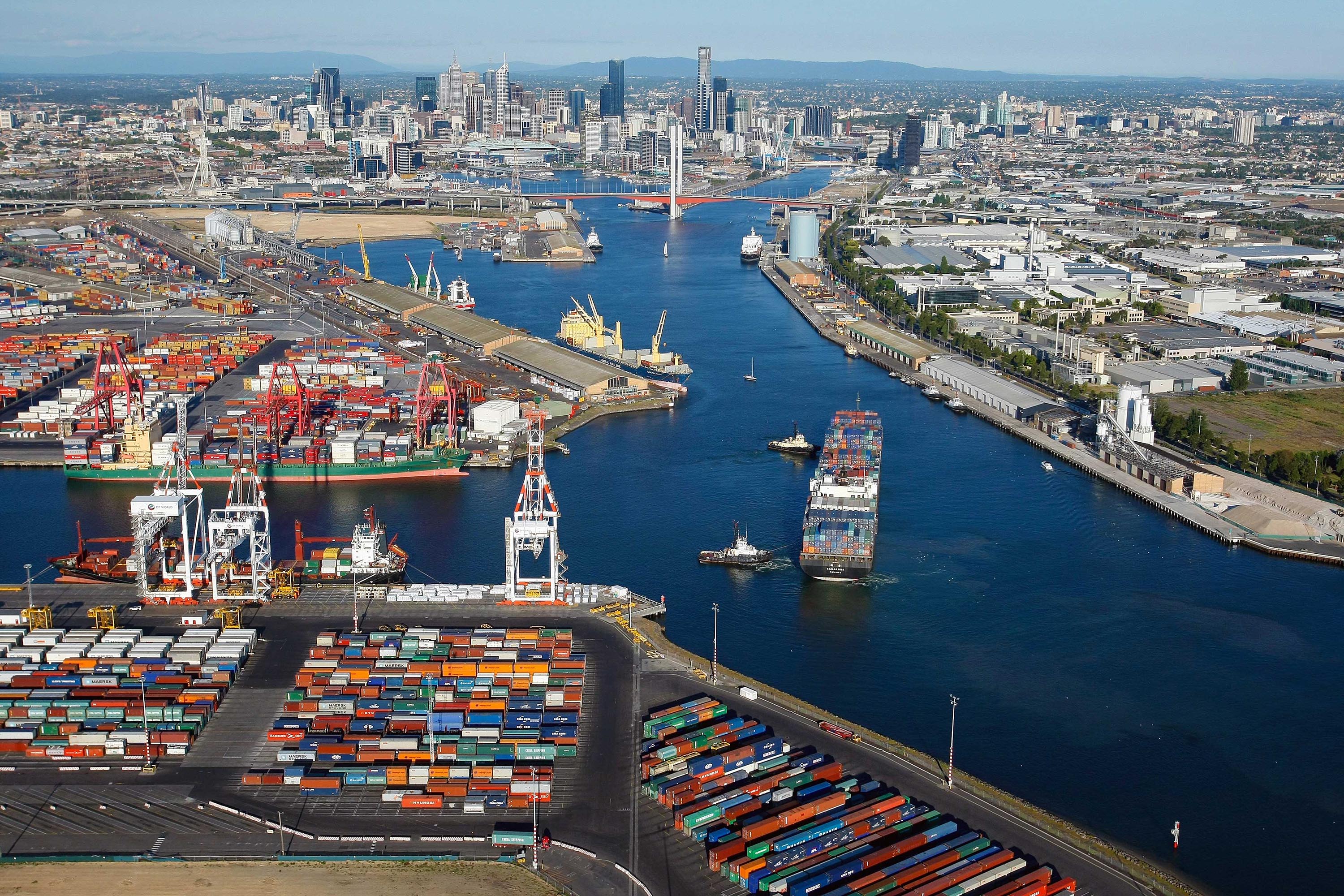NPS, CIC joint fund invests in A$9.7 bn Australian port deal
Sep 20, 2016 (Gmt+09:00)
2
Min read
Most Read
LG Chem to sell water filter business to Glenwood PE for $692 million


Mirae Asset to be named Korea Post’s core real estate fund operator


KT&G eyes overseas M&A after rejecting activist fund's offer


Meritz backs half of ex-manager’s $210 mn hedge fund


StockX in merger talks with Naver’s online reseller Kream


South Korea’s National Pension Service (NPS) has invested A$500 million in a deal of securing a 50-year-lease on Australia’s biggest container and cargo port by a consortium for A$9.7 billion, according to South Korean investment banking sources on Sept. 19.
 NPS had formed a joint fund last year with China Investment Corporation (CIC), Queensland Investment Corporation (QIC) and other investors, targeting infrastructure that the Australian government plans to privatize. The fund is being managed by New York-based Global Infrastructure Partners (GIP) which is one of major partners of the consortium formed to buy the leasing right of Australia’s busiest port.
NPS had formed a joint fund last year with China Investment Corporation (CIC), Queensland Investment Corporation (QIC) and other investors, targeting infrastructure that the Australian government plans to privatize. The fund is being managed by New York-based Global Infrastructure Partners (GIP) which is one of major partners of the consortium formed to buy the leasing right of Australia’s busiest port.
The Port of Melbourne is the first investment of the joint fund. The South Korean pension fund targets an annual return of about 10% on investments in Australian infrastructure. No further details are immediately available about how much other participants in the fund invested for the Australian port deal, nor the ownership structure.
Australia’s sovereign wealth fund, The Future Fund, and Canada’s Ontario Municipal Employees Retirement System reportedly have participated in the consortium and will have a stake in the Port of Melbourne.
The Port of Melbourne deals with more than 3,000 ships a year and is the biggest container and cargo port in Australia. Last year it handled 2.6 million TEU (1 TEU equals a 6-meter container).
The Victorian state government had put the leasing right of the Port of Melbourne up for sale to finance the construction of roads and other infrastructure facilities. The consortium, including the GIP which manages the joint fund of NPS, CIC and QIC, beat a consortium of APG Asset Management. The sale price was far above the Victorian government’s initial expectation of A$6 billion, according to media reports.
“Australian government has been privatizing infrastructure assets to raise money needed to support economic policies aimed at boosting economic growth,” one of the South Korea-based IB sources told the Korea Economic Daily. “Australia places an importance on fulfilling contracts and maintains policy consistency, so Australian infrastructure is attracting attention of institutional investors around the world.”
At end-2015, Australian alternative assets, including infrastructure and office buildings, made up about 4% of the NPS’ overseas alternative investments.
By Chang Jae Yoo and Dongwook Jwa
yoocool@hankyung.com
 NPS had formed a joint fund last year with China Investment Corporation (CIC), Queensland Investment Corporation (QIC) and other investors, targeting infrastructure that the Australian government plans to privatize. The fund is being managed by New York-based Global Infrastructure Partners (GIP) which is one of major partners of the consortium formed to buy the leasing right of Australia’s busiest port.
NPS had formed a joint fund last year with China Investment Corporation (CIC), Queensland Investment Corporation (QIC) and other investors, targeting infrastructure that the Australian government plans to privatize. The fund is being managed by New York-based Global Infrastructure Partners (GIP) which is one of major partners of the consortium formed to buy the leasing right of Australia’s busiest port.The Port of Melbourne is the first investment of the joint fund. The South Korean pension fund targets an annual return of about 10% on investments in Australian infrastructure. No further details are immediately available about how much other participants in the fund invested for the Australian port deal, nor the ownership structure.
Australia’s sovereign wealth fund, The Future Fund, and Canada’s Ontario Municipal Employees Retirement System reportedly have participated in the consortium and will have a stake in the Port of Melbourne.
The Port of Melbourne deals with more than 3,000 ships a year and is the biggest container and cargo port in Australia. Last year it handled 2.6 million TEU (1 TEU equals a 6-meter container).
The Victorian state government had put the leasing right of the Port of Melbourne up for sale to finance the construction of roads and other infrastructure facilities. The consortium, including the GIP which manages the joint fund of NPS, CIC and QIC, beat a consortium of APG Asset Management. The sale price was far above the Victorian government’s initial expectation of A$6 billion, according to media reports.
“Australian government has been privatizing infrastructure assets to raise money needed to support economic policies aimed at boosting economic growth,” one of the South Korea-based IB sources told the Korea Economic Daily. “Australia places an importance on fulfilling contracts and maintains policy consistency, so Australian infrastructure is attracting attention of institutional investors around the world.”
At end-2015, Australian alternative assets, including infrastructure and office buildings, made up about 4% of the NPS’ overseas alternative investments.
By Chang Jae Yoo and Dongwook Jwa
yoocool@hankyung.com
Yeonhee Kim edited this article
More to Read
-
 Pension fundsNPS yet to schedule external manager selection; PE firms’ fundraising woes deepen
Pension fundsNPS yet to schedule external manager selection; PE firms’ fundraising woes deepenMay 02, 2025 (Gmt+09:00)
-
 Real estateMirae Asset to be named Korea Post’s core real estate fund operator
Real estateMirae Asset to be named Korea Post’s core real estate fund operatorApr 29, 2025 (Gmt+09:00)
-
 Asset managementMirae Asset bets on China as Korean investors’ US focus draws concern
Asset managementMirae Asset bets on China as Korean investors’ US focus draws concernApr 27, 2025 (Gmt+09:00)
-
 Alternative investmentsMeritz backs half of ex-manager’s $210 mn hedge fund
Alternative investmentsMeritz backs half of ex-manager’s $210 mn hedge fundApr 23, 2025 (Gmt+09:00)
-
 Real estateRitz-Carlton to return to Seoul, tapped by IGIS Asset for landmark project
Real estateRitz-Carlton to return to Seoul, tapped by IGIS Asset for landmark projectApr 22, 2025 (Gmt+09:00)
Comment 0
LOG IN


